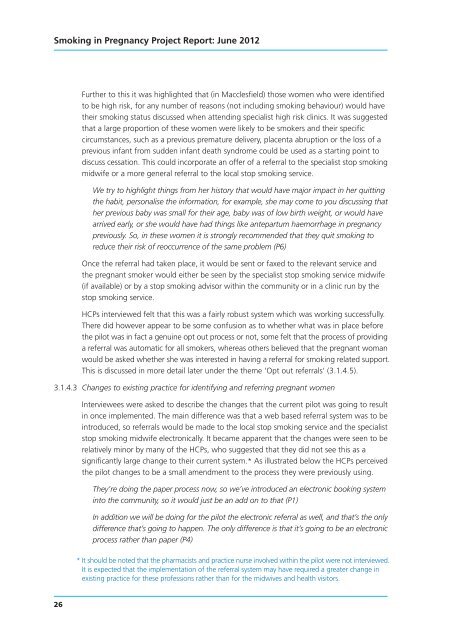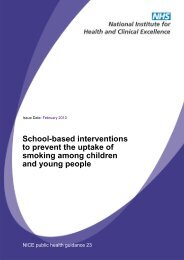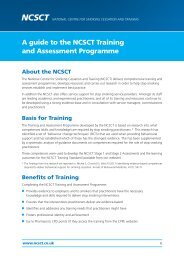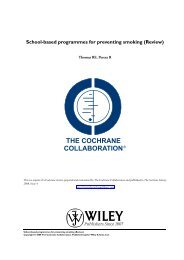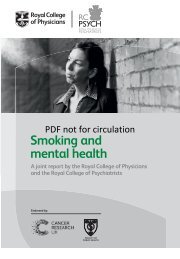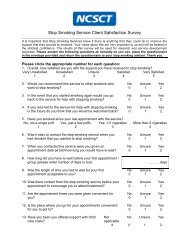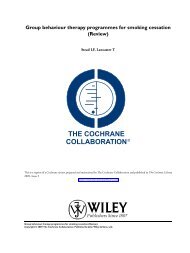published
published
published
You also want an ePaper? Increase the reach of your titles
YUMPU automatically turns print PDFs into web optimized ePapers that Google loves.
Smoking in Pregnancy Project Report: June 2012<br />
Further to this it was highlighted that (in Macclesfield) those women who were identified<br />
to be high risk, for any number of reasons (not including smoking behaviour) would have<br />
their smoking status discussed when attending specialist high risk clinics. It was suggested<br />
that a large proportion of these women were likely to be smokers and their specific<br />
circumstances, such as a previous premature delivery, placenta abruption or the loss of a<br />
previous infant from sudden infant death syndrome could be used as a starting point to<br />
discuss cessation. This could incorporate an offer of a referral to the specialist stop smoking<br />
midwife or a more general referral to the local stop smoking service.<br />
We try to highlight things from her history that would have major impact in her quitting<br />
the habit, personalise the information, for example, she may come to you discussing that<br />
her previous baby was small for their age, baby was of low birth weight, or would have<br />
arrived early, or she would have had things like antepartum haemorrhage in pregnancy<br />
previously. So, in these women it is strongly recommended that they quit smoking to<br />
reduce their risk of reoccurrence of the same problem (P6)<br />
Once the referral had taken place, it would be sent or faxed to the relevant service and<br />
the pregnant smoker would either be seen by the specialist stop smoking service midwife<br />
(if available) or by a stop smoking advisor within the community or in a clinic run by the<br />
stop smoking service.<br />
HCPs interviewed felt that this was a fairly robust system which was working successfully.<br />
There did however appear to be some confusion as to whether what was in place before<br />
the pilot was in fact a genuine opt out process or not, some felt that the process of providing<br />
a referral was automatic for all smokers, whereas others believed that the pregnant woman<br />
would be asked whether she was interested in having a referral for smoking related support.<br />
This is discussed in more detail later under the theme ‘Opt out referrals’ (3.1.4.5).<br />
3.1.4.3 Changes to existing practice for identifying and referring pregnant women<br />
Interviewees were asked to describe the changes that the current pilot was going to result<br />
in once implemented. The main difference was that a web based referral system was to be<br />
introduced, so referrals would be made to the local stop smoking service and the specialist<br />
stop smoking midwife electronically. It became apparent that the changes were seen to be<br />
relatively minor by many of the HCPs, who suggested that they did not see this as a<br />
significantly large change to their current system.* As illustrated below the HCPs perceived<br />
the pilot changes to be a small amendment to the process they were previously using.<br />
They’re doing the paper process now, so we’ve introduced an electronic booking system<br />
into the community, so it would just be an add on to that (P1)<br />
In addition we will be doing for the pilot the electronic referral as well, and that’s the only<br />
difference that’s going to happen. The only difference is that it’s going to be an electronic<br />
process rather than paper (P4)<br />
* It should be noted that the pharmacists and practice nurse involved within the pilot were not interviewed.<br />
It is expected that the implementation of the referral system may have required a greater change in<br />
existing practice for these professions rather than for the midwives and health visitors.<br />
26


